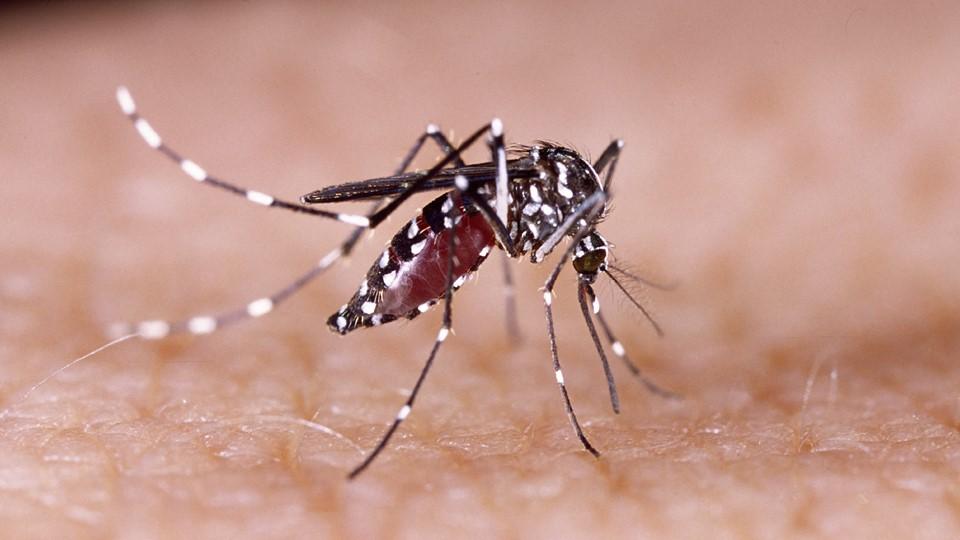Pandemic caused vaccine confidence to fall even further

Research has shown that vaccine hesitancy is on the rise globally. Ben Hargreaves finds that, despite the successful rapid development of vaccines against the COVID-19 pandemic, public trust in their use has dropped.
The ability to develop multiple COVID-19 vaccines in record time stands as a landmark achievement for the pharmaceutical industry. Initially, it seemed that the general public had responded favourably to the industry’s rapid intervention, with data from Axios Harris suggesting a major reputation boost. However, as the pandemic has waned, the reputation boost has slowly dissipated. A similar trajectory can be seen in sentiment towards vaccines more broadly. High overall vaccination coverage was achieved for the COVID-19 pandemic, but this has been followed by an overall decline in vaccine confidence.
This cannot be wholly attributed to the impact of COVID-19, as the overall trend prior to the pandemic had been towards greater reluctance or refusal to vaccinate. In 2019, the WHO identified the issue as one of the top 10 threats to global health. The pandemic brought these existing issues to the forefront of discussion once the public health crisis was under control.
The situation as it stands
The European Commission recently published a report looking into the impact of vaccines on public health, and the rise of vaccine hesitancy in the region. The authors concluded that vaccine coverage rates in many regions across the European Union are falling below the recommended levels. In turn, this is increasing the risk posed by infectious diseases that had previously been well-controlled.
The authors concluded that the pandemic had brought forward positive developments, in terms of the solutions and tools that were developed during this period. This included the digitalisation of data collection at the EU level, and establishment of the EU Digital COVID Certificate, which could become a global standard against future pandemics. However, the same report found that the pandemic highlighted the size and scope of vaccine hesitancy across the region.
Similarly, in the US, a study conducted by Pew Research found that, post-pandemic, there was a smaller percentage of Americans expressing the belief that children should be required to be vaccinated in order to attend schools. In prior studies, 82% had supported vaccine requirements, which fell to approximately 70% in the recent report. The report also found that fewer than half of US adults consider the preventative health benefits of COVID-19 vaccines to be high, with a majority also perceiving the risk of side effects as being at least medium. Overall, 62% of those questioned believed the COVID-19 vaccines’ benefits did outweigh their risks – though, this is far below other childhood vaccines, with MMR vaccines seeing support levels of 88%.
In the UK, the University of Portsmouth ran and compared results from two online surveys conducted in 2019 and 2022, which showed that confidence in vaccinations in the post-pandemic groups was considerably lower than in the pre-pandemic group. In total, one in four participants noted that their confidence in vaccines had dropped since the pandemic.
Broadly, Unicef found that this is the case globally. In research conducted into confidence for childhood vaccination, the organisation found that, in most countries, people under 35 and women were more likely to report less confidence about vaccines for children after the start of the pandemic.
Neil Raw, Unicef UK senior policy advisor, told pharmaphorum that, although the data shows that there ‘remains strong’ trust in vaccination, there are signs that this confidence is declining. “Further research into these factors is required, although initial findings show declining trust in expertise and growing access to misinformation to be among many contributing factors,” he added.
The drivers of hesitancy
As mentioned by Raw, tackling the issue of vaccine hesitancy means understanding the root causes, but this is not as simple as one underlying reason. Instead, there are various issues that play into rising doubts over vaccines.
The European Commission report concluded, “Today, vaccination is a victim of its own success. Some people no longer see the impacts of infectious diseases that are no longer present due to vaccination schemes, and a considerable number may even therefore question the importance of vaccination.
“It is also a problem that varies depending on the context, country, and type of vaccine concerned, and for this reason it is particularly challenging. There is no one-size-fits-all solution, and a sustainable effort in improving dialogue with citizens, understanding their concerns, and developing tailored vaccination strategies, alongside targeted communication campaigns, is required.”
One survey of US essential and non-essential workers found that levels of hesitancy varied by age, insurance coverage status, and race and ethnicity across all work settings. In terms of the reasons given by individuals, the primary reason was concern about side-effects, but trust in the government also played a role.
In Unicef’s research into lower levels of confidence for childhood vaccination, the organisation found that uncertainty towards the response to the pandemic, growing access to misleading information, declining trust in expertise, and political polarisation were some of the key reasons driving vaccine hesitancy. Amid the difficult circumstances of the pandemic, this has led to the current situation, where the world is facing the largest sustained backslide in childhood immunisation in 30 years.
Raw explained how this arose: “The pandemic led to this decline due to increased demands placed on countries health systems, the diversion of immunisation resources towards COVID-19 vaccination efforts, and shortages of health workers. The pandemic also exacerbated existing inequalities with children living in the remote and marginalised communities missing out before the pandemic. Global immunisation coverage rates had previously stagnated for almost a decade even prior to the pandemic.”
What can be done
As identified by the European Commission’s report, there is no single answer on how to address this growing issue. The reasons are varied for hesitancy, and are specific to certain demographics and countries. For its part, the EU suggested that member states should step up their joint efforts to extend cooperation against vaccine-preventable diseases, including applying the lessons learnt from the pandemic.
Unicef’s report urges four key pillars of response to the situation: urgently identify and reach all children, especially those who missed vaccinations during the COVID-19 pandemic; strengthen demand for vaccines, including by building confidence; prioritise funding to immunisation services and primary health care; and build resilient health systems through investment in female health workers, innovation, and local manufacturing.
The challenges facing lower-income countries are different, though the problem remains the same –as one in five individuals were hesitant to receive a COVID-19 vaccine. Specifically, hesitancy towards vaccines was driven by concerns over side effects, but also a preference for natural immunity, and some countries had issues with concern over supply constraints or vaccination logistics. The report suggested designing vaccine campaigns based around safety, particularly focused on side effects, and also to target the groups that have been found to be most hesitant.
Similar conclusions were drawn by a paper on global vaccine inequity and hesitancy, wherein the authors stated that “rebuilding trust in the vaccines and the health authorities promoting them must be a priority”. Further, they note that vaccination messaging should be focused more clearly on the efficacy, in the case of COVID-19 vaccines.
Just as the development and efforts against the pandemic required a joined-up, international approach, so too will the current crisis in confidence in vaccines themselves.
“To address declining immunisation coverage, it is vital that donors and governments around the world prioritise catching up on vaccinating missed children. This requires government to increase funding to immunisation services and unlocking available resources to accelerate catch-up efforts. Addressing systemic challenges requires supporting the strengthening of immunisation and primary health care systems to reach marginalised children,” Raw concluded.










8c10.jpg)

